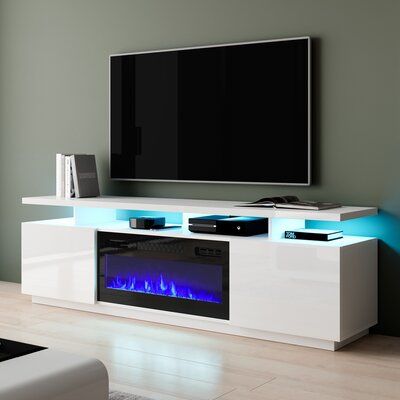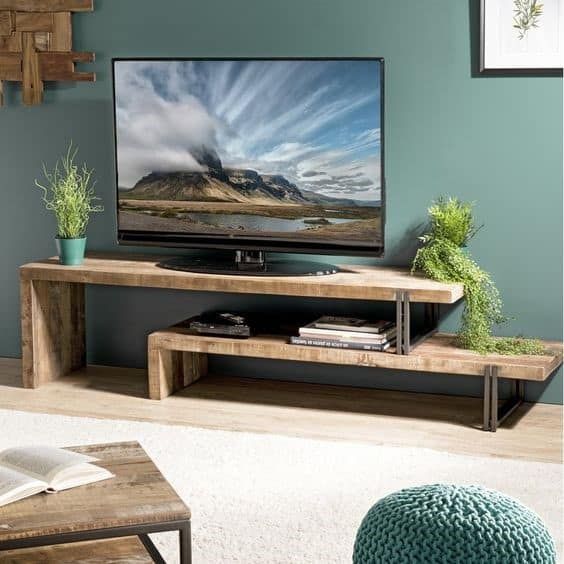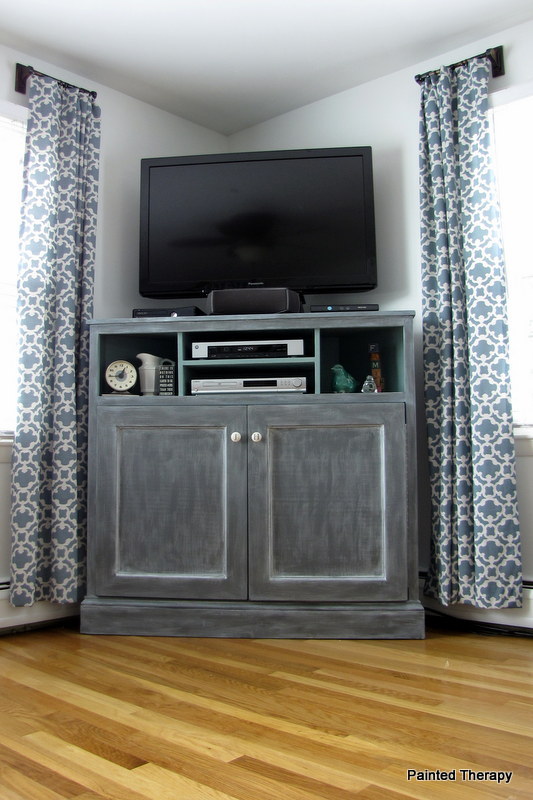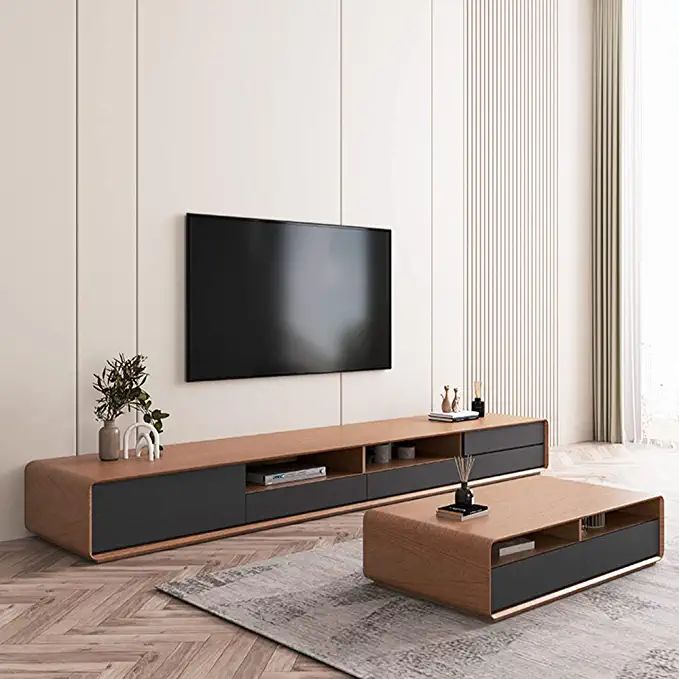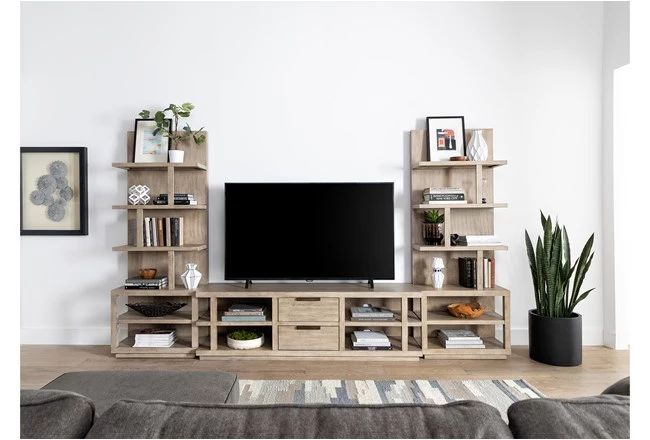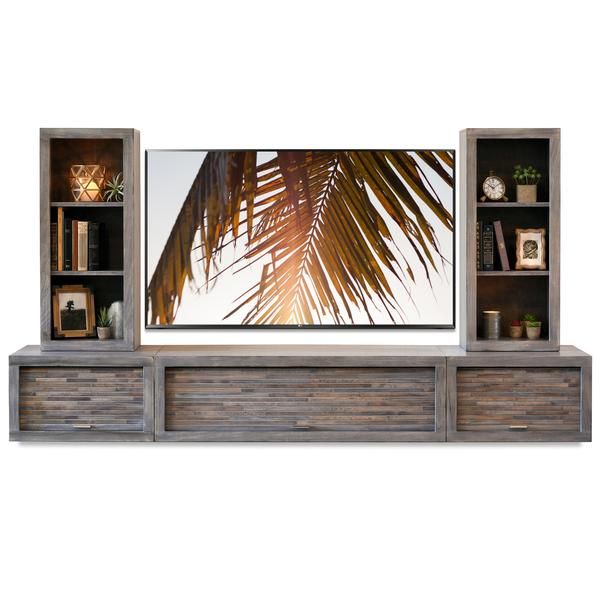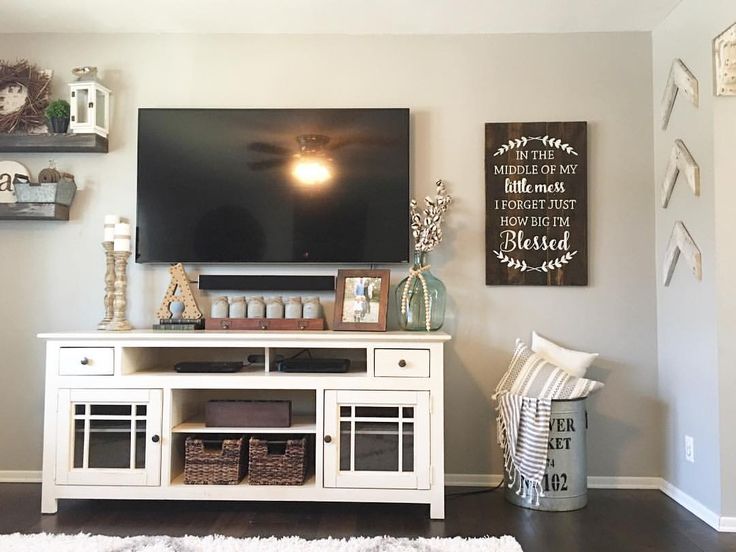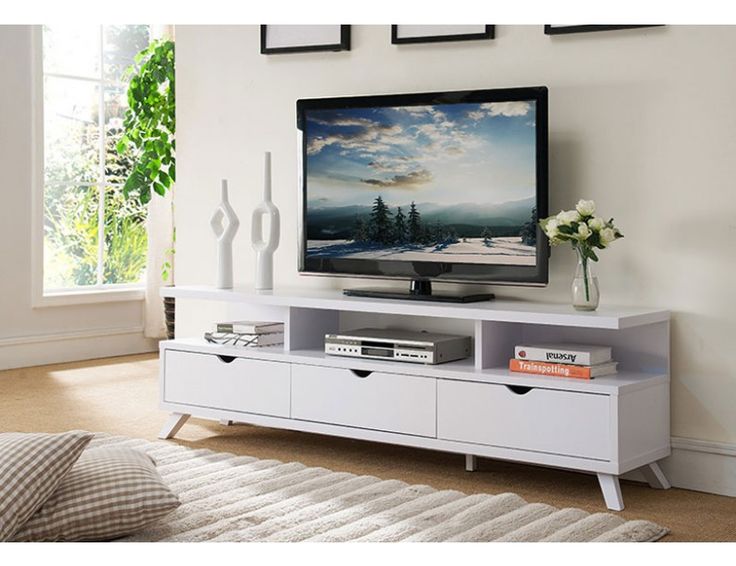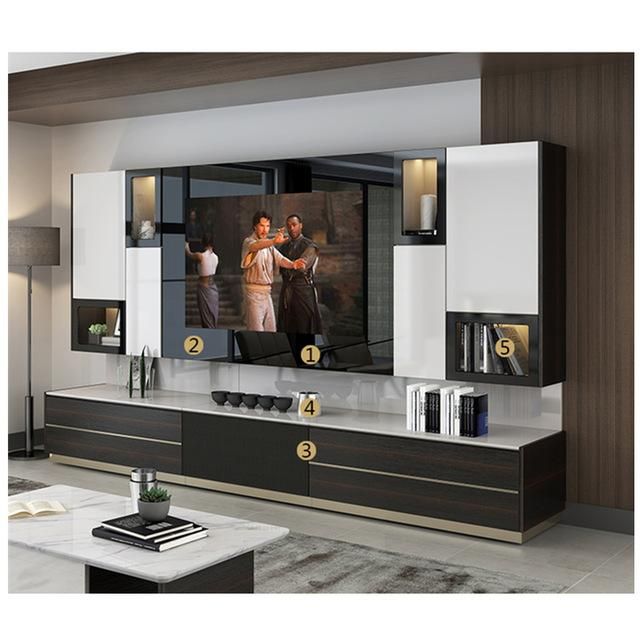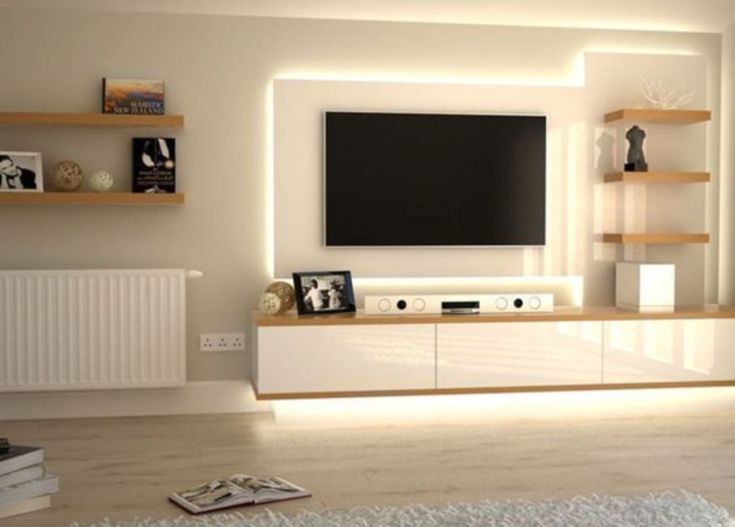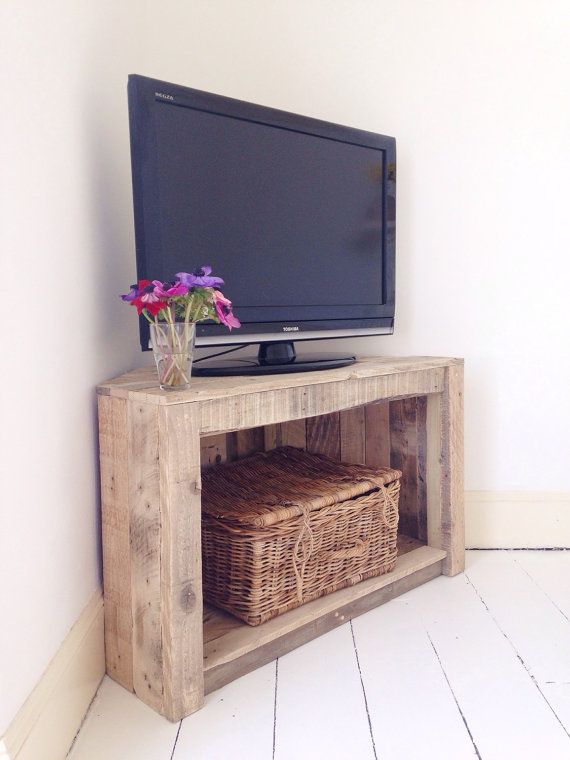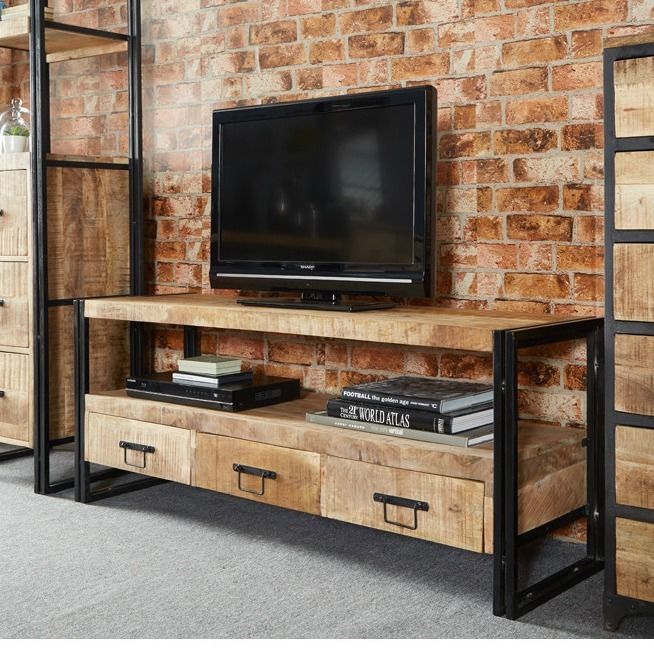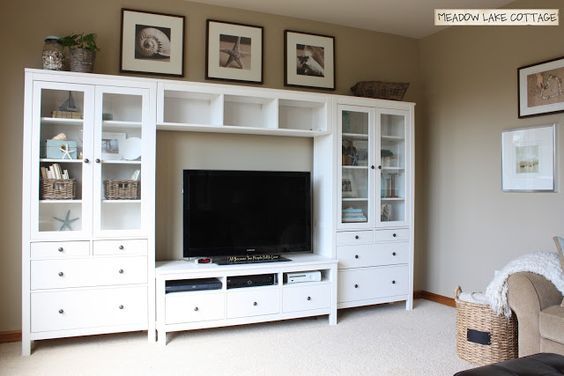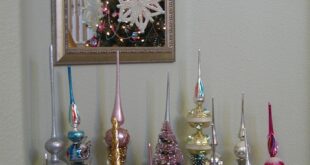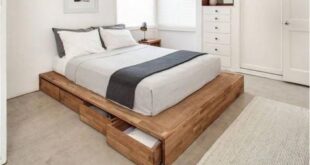Lily Wright
| April 01, 2020
Those of us of a certain age will remember the console TVs of the 1970s. A 25-inch television with that huge cathode ray tube (CRT) was considered large and housed in an enclosure that held the television alone or with extensions on either side, along with a stereo and turntable for playing vinyl LP albums. They were huge and bulky, but very popular back then.
Today’s HDTVs are larger, featuring a 50-inch screen, which is found in living rooms and bedrooms. The console has been replaced by TV stands and complete entertainment (media) centers that provide an attractive alternative to those old consoles.
How do I choose a TV stand?
A TV booth is essentially a small entertainment center. The difference is that the TV stand primarily serves as a base for the TV, while the entertainment center has additional shelves and cabinets that can extend beyond the central area.
-
The first obvious step is to adjust the TV stand to the size of your TV. Normally, new HD TVs are sold with it Wall mount brackets and with support legs or a platform. The platform is often a rectangular or oval base that easily fits any size TV stand. The main concern is to choose a stand that is roughly the width of the TV.
-
A smaller TV on a larger stand is acceptable, with additional items like a vase or framed picture to complete the look. For a larger TV, make sure it has support legs The legs sit a few inches from the edges to provide the necessary support. The legs typically attach to the TV about two inches from the sides and spread another inch.
-
A wider TV on a smaller stand looks top-heavy and more prone to falls It is therefore not recommended. The weight of the TV usually doesn’t matter if the stand itself is strong enough to support it. The only exception is for those who can’t part with their 37-inch 1990s tube TV. But it can still work well The 100-pound weight might overwhelm some TV stands Engineered for the weight of today’s televisions.
How to choose an entertainment center?
Entertainment or media centers tend to be larger than TV stands and takes up more wall space. If you want something that fits comfortably in a corner, use a smaller TV stand.
Many entertainment centers have what is called a central rectangular or square enclosure a stable, that will hold your TV. Make sure your TV fits in the booth A few inches on each side, top and back for proper ventilation. This is important to dissipate the heat generated by the TV and to make it easier to remove the TV for cleaning and checking the cables and connections.
Make sure you have any before purchasing Holes or ports for routing power cords and wires to outlets and other peripherals such as speakers, video players, karaoke machines, and the like. Owners of this 37 inch CRT TV must Make sure the barn doors close completely Just as many entertainment centers have sliding or double doors to hide the TV when not in use.
What are the best entertainment centers and TV booths made of?
For dorm students, concrete blocks with wooden boards or creatively stacked plastic milk crates are good places to set up a TV. If you are looking for something more sophisticated, choose either wood and metal or a combination of both.
- Wood provides a more traditional “rustic” look and will determine the choice of wood cherry and maple as a medium-priced choice of wood oak and mahogany for higher-priced wood options.
- The metal used in many entertainment centers and TV stands is Steel or aluminum tubing with powder coating or chrome plating. Metals are better suited to modern homes.
- Those who seek cheap plastic or plastic items It’s best to heed the famous advice: “You usually get what you pay for.”
What are the most common types of TV booths and entertainment centers?
There are three common types of TV stands and media centers that come in many styles and designs. This depends on the function and use of the device.
-
The first type for those who need storage space and have a wall at their disposal is an independent media center or TV stand. It can be as simple as a dresser. The TV stands on the dresser or on a wall bracket above it. Loudspeakers and other audiovisual components can also be accommodated on the chest of drawers. With a wide nine-drawer cabinet, it is perfect for the bedroom and for storing clothes. However, keep a drawer ready for keys, loose change and other small items.
-
For entertainment centers, take the same standalone style and add a TV cabinet and there you have it the stable style Suitable for the living room or your “man cave”. When choosing this type of entertainment center, keep in mind the cabin guidelines above.
-
TV stands offer an additional style, the corner unit with a triangular or three- or five-sided design that allows it to fit snugly in a corner. This has the advantage that you save space and can immediately become a home office. The corner unit is located outside the center of the room. Keep a laptop here to use with noise-cancelling headphones while your kids sing and dance to Baby Shark videos on YouTube.
How do I choose from the many types of entertainment centers and TV booths?
Do you lack aesthetic skills? Get help from a friend who has these skills. If the entertainment center is part of a remodel, ask your interior designer to include it in the new design, including as an inset media center that adds usable space to the space.
However, since there is an almost unlimited number of style options, it is better to discuss them what not to do. Here are the don’ts:
-
Don’t try to fit a large entertainment center into a small space. Aside from the logistics of moving, the device protrudes up to 24 inches, or 20% of a 10-foot width, into the room.
-
Don’t place modern design in an old-fashioned space. The contrast of a futuristic wall unit in a living room with a traditional or vintage design is likely to seem a bit odd.
-
Don’t do the opposite and place an old-fashioned entertainment system in a modern space.
-
Don’t forget to measure any other items located in or on the entertainment center. This includes speakers, CD players, amplifiers, soundbars, oversized books and pictures.
-
Don’t forget line of sight from your seat to the TV screen. A common mistake with wall-mounted TVs is mounting them too high, causing people to crane their necks from the sofa. Viewers usually prefer in the center of the TV screen at a height of about 40 to 50 inchesHowever, this is largely a personal matter, as is the aesthetic qualities of the TV stand you choose.
What else should you look for in a TV booth or entertainment center?
-
glass doors and panes of glass are a nice feature of TV stands and entertainment centers. The color of the smoked glass goes well with the normally black TV cabinet and the tinted glass hides items on the shelves behind the glass. Through glass, the signal from your remote control can also reach a hidden DVD player.
-
If you have an 8-year-old who likes to throw small projectiles, glass might be a poor choice. Make sure all glass doors or panels are made of glass tempered glass for extra strength.
-
You may not yet know what’s in your entertainment center. So think about it adjustable shelves which you can customize as needed. Make sure the movable support pins are not broken or damaged and make sure they are all level before placing the shelves on them.
-
Choosing wood for a TV stand or entertainment center limits your color choices to a few shades of brown. Metal is usually the silver/grey color of steel or chrome. For other colors Composite materials with laminate veneers are an option.
-
Bluetooth and wireless technology helped, but people still have to deal with a tangle of cables and wires, from the power plug to the various inputs and outputs of your media system. When purchasing your TV stand, check if there are any cable organization system on it.
-
Also consider that you plan to stay in your current home or move to the proverbially greener climes. Your choice of buying a large heavy wall unit or a small portable TV stand Before or after your move, it depends on your willingness to use and availability for your new apartment.
Last word: Remember, one of the drawers or shelves of your new entertainment center might be the perfect place for your cat to take a warm, cozy nap. This is the first place to look to see if “Princess” is missing.
